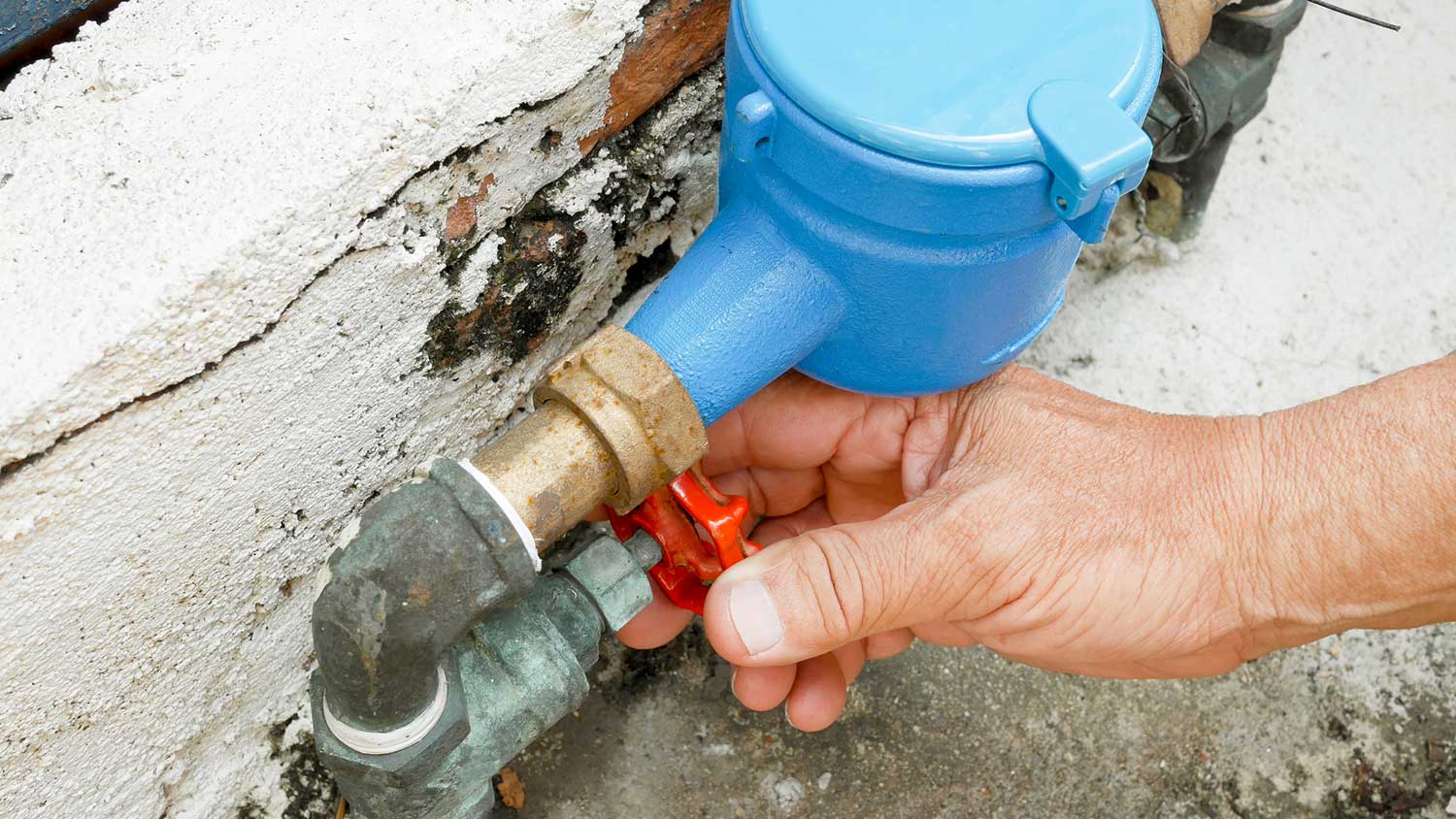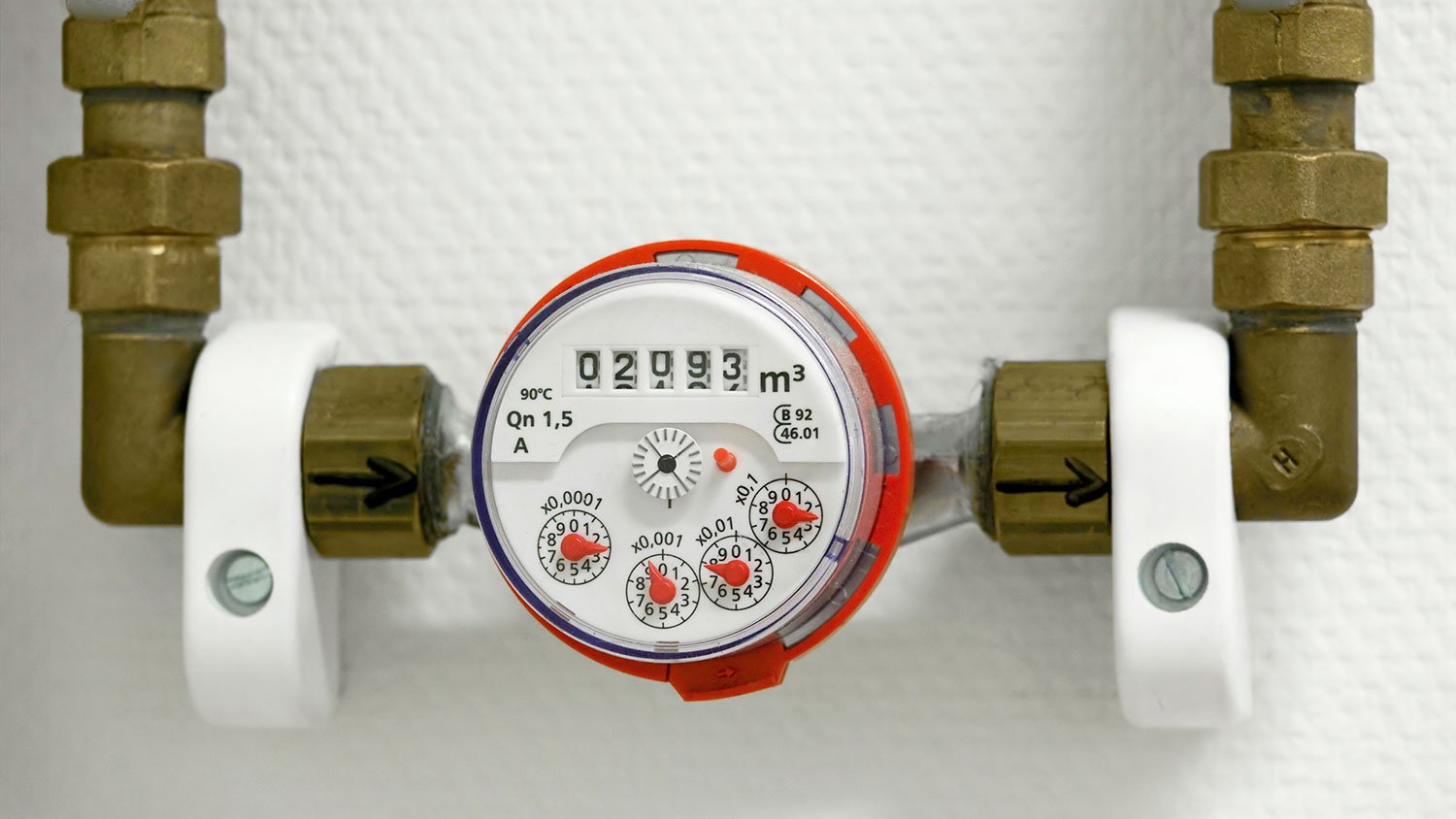
Emergency plumbers cost between 1.5 and 3 times as much as a typical plumber. Get specifics for your plumbing issue and city in our guide.
The pressure’s on to get the most out of your water


Showering or washing dishes by hand can feel like it takes forever when your home has low water pressure. While a lower pressure can conserve water in the house, it can also put pressure on your time with your family or time spent relaxing after a long day of work. Ditch the frustration and try out some of these tips to make your home’s water pressure stronger.
Testing your home’s water pressure is the first step in figuring out the mechanisms behind the low pressure throughout your home. All you need is a simple water pressure gauge, which you can purchase from your local hardware store for just $10 to $15.
Turn off all your faucets and water-using appliances to test the water pressure, and if possible, choose an outside faucet closest to your water meter. Your gauge should read between 45 and 55 pounds per square inch (psi). Anything under 40 psi indicates a low water pressure reading, while anything above 80 psi is a sign that your water pressure is too high.

One common culprit for low water pressure is a partially closed main water valve, also called the shutoff valve. Your water valves can partially close, resulting in lower water pressure. To check, open your water meter box and inspect the valve handle. It should be parallel to the water pipe, so if it’s at an angle, it’s slightly closed off, restricting the water flow.
Note that every home has two shutoff valves. The second one is either inside your home or located somewhere on the outside. This valve can also get turned off partially after repairs. If you noticed the decrease in your water pressure around the same time you had a repair, this could be the cause.
Another one of the more simple fixes to low water pressure is checking and adjusting your pressure-reducing valve (PRV). You can find this bell-shaped valve in your water meter box, attached to your main water supply pipe. Sometimes, you need to loosen the nut on the pressure valve to increase the pressure.
While most PRVs come preset at 50 psi, the valve can loosen or malfunction over time. If your PRV is over 10 years old, you might need to replace it.
Your water pressure issues can start with the public water system. Comparing water pressure with your neighbors can help you determine if there’s an issue with the municipal water system in your city or if it’s an issue only you’re experiencing.
Gone are the days of climbing up the hill to fetch a pail of water. A well pump pulls water up to your home from the well. But if your pump or pressure tank is defective, or your well’s water levels are low, you might experience low water pressure. Your pressure tank holds the water pulled from your well under pressure for quick access. If there’s an issue with your pressure tank, your pump has to work overtime to pull water up to your home when you turn on the tap.
In either of these scenarios, it’s a good idea to contact a well pump contractor near you to investigate the source of the problem. Your technician will inspect the well pump and pressure tank connected to it to see if either component is responsible for the low water pressure.

If you’ve noticed a spike in your water bills along with low water pressure, there’s a good chance that there’s a leak causing the low pressure. To check for leaks, turn off all water sources and write down the number of gallons on your water meter. Wait a few hours and then check to see if the numbers changed.
Changes in the water meter reading when you’re not using water mean you have a leak somewhere on your property. Finding the source of a water leak is easier said than done, though—beyond a toilet or faucet leak, underground pipes possess an uncanny resemblance to invisible labyrinths. You might want to save time manually investigating leaks and hire a pro to find the source if it’s not a simple leak.
Steel, copper, and even PVC pipes can experience limescale from mineral buildup that forms blockages in your pipes. Calcium and magnesium are common minerals found in hard water that can lower your water pressure.
In some cases, you can break up mineral deposits in pipes by using vinegar, but limescale buildup usually comes from water heaters. To allow the vinegar to work its way through the pipes, turn off the heater, drain a few gallons of water, apply vinegar to the tank, and let it sit overnight.
You can sometimes resolve low water pressure by installing a water pressure booster pump. These pumps connect to your main water line and use a motor impeller to increase your water flow rate.
Pressure booster pumps come in on the pricey side— the average cost for a pressure booster unit and installation is $800, but the price can exceed this amount and go into the $1,000s for larger boosters. You’ll also want to hire a plumber near you to install the booster pump, as it’s not a DIY job. For these reasons, this should be one of your last resorts if all else fails.
If you live in the city, you may have a problem beyond your control—homes connected to a city water line can usually contact their city to conduct a water pressure test free of charge. This test will determine if the issue lies in the water delivery to your home. If the test is negative, you can rule out a public water problem and focus on troubleshooting your low water pressure within your home.
From average costs to expert advice, get all the answers you need to get your job done.

Emergency plumbers cost between 1.5 and 3 times as much as a typical plumber. Get specifics for your plumbing issue and city in our guide.

Plumbing inspection costs depend on the issue you’re looking into and the size of your home. Learn what you can expect to pay.

How much does hydro jetting cost? Learn hydro jet drain cleaning prices based on factors like the extent of the clog, accessibility, and more.

Insulating your pipes is a simple DIY project that can prevent costly damage and lower your energy bills. Learn how to insulate your pipes yourself with this easy guide.

We’ll show you how to keep pipes from freezing in the winter and how to thaw yours before they burst.

Installing a new kitchen sink involves removing the old sink and putting in the new one. Follow these steps to learn how to install a kitchen sink like a pro.